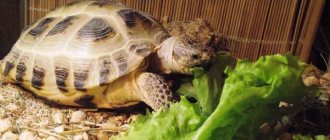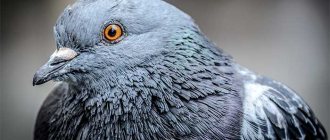The future owner of a red-eared turtle must understand that he is getting a little pet for almost his entire life. There are often cases when in captivity they calmly live to a very advanced age of 30-40 years or more . But this happens when people understand that the turtle is not a toy, and it requires proper daily attention. If you do not follow some rules, then your red-eared beauty will give up the ghost very soon, and even good genes will not help her.
How to extend the life of a turtle at home?
First, you need to reconsider the animal’s diet. Food in captivity should provide the pet with essential minerals and vitamins. It is recommended to use purchased dry food as a basis. Manufacturers have already selected an adequate composition. You need to feed the animal during the day (and not in the evening after work).
In addition to dry food. You need to add more protein to your diet: crustaceans, meat, snails and more.
How long does a jinny last in the wild?
In the wild, red-eared turtles live in optimal natural conditions, and therefore may well live to the maximum possible age. For the natural environment this period is 30 years . But not all individuals survive to this time , since many die due to diseases, parasites or predators.
However, a balanced diet, unlimited space and interaction with other turtles are no better for extending the life of these reptiles than parasite-proof home terrariums .
In the wild, only 10% of turtles survive to adulthood, and less than 1% survive to old age . In a home terrarium, many of the causes of such high mortality can be avoided.
Maintenance and care
How long does a red-eared slider live? The life of a freshwater pet depends on the person and how the aquaterrarium is arranged. This pet needs a dry island to climb out to warm itself. The volume of the tank in which the turtle lives is at least one hundred and fifty liters per pet. Ambient temperature is high. A special heating lamp must be placed above the sushi island. Turning off the light source in the evening is a must! 2 times a month, the aquaterrarium is disinfected with a lamp. Change water 4 times a month.
Reasons why turtles don't live long in captivity
- Improper animal care. If for small turtles a few tens of liters of a terrarium will be enough, then for adult turtles having space is a vital thing.
- Infectious diseases. The cause of the spread of infections is considered to be aquarium decor that is not washed or disinfected.
- Lack of nutrients. These are the consequences of an incorrectly composed diet. A turtle that does not receive enough vitamins may develop rickets (softening of the shell).
- Veterinarian inexperience. In fact, there are not as many reptile specialists as they say. Due to lack of experience, many doctors misidentify diseases, and the turtle dies from the wrong diagnosis.
In general, turtles are very funny pets. Due to the fact that all metabolic processes in the body are inhibited, the animal can live for a long time without food. Before purchasing such a pet, it is recommended to first familiarize yourself with the rules of care and requirements for the terrarium of such animals. You should take care of the necessary equipment that can bring the conditions closer to natural ones.
If 1 turtle gets sick, and there are several of them in the aquarium, then it is necessary to urgently quarantine the sick one. Because other pets will also become infected.
How to find out the gender of a turtle? Easy to determine! Boys have longer tails and claws. Girls have a depression in their shell.
How long do they live in nature?
In nature, red-eared turtles live on average 20-25 years. Rare individuals can live up to 50 years. In the wild, many turtles die shortly after hatching. They are often attacked by birds of prey and animals, and they are not yet able to defend themselves. Adults, in addition to predators, die from diseases and parasites.
Turtles have a slow metabolism. They can live for a long time without food. Red-eared turtles are omnivores; they have no shortage of food.
What do red-eared turtles eat?
Feeding —
a very important part of our pets’ lives. It is with food that they receive all the necessary nutrients.
Remember: feed the turtles the same things we eat. —
it is forbidden!
Reminder: red-eared turtles —
predators and plant foods should appear in their diet only in adulthood.
The following is not suitable as food: meat, semi-finished meat products (minced meat, sausages, sausages), chicken, fatty fish, salted fish, fried, sweet and salty, ready-made dry food.
What to feed red-eared turtles at home, you ask? Let's discuss this now. To simplify feeding turtles, they can be kept with fish, which they will catch and eat, receiving all the necessary nutrients.
If this option does not suit you, then we stick to the following diet, which needs to be combined: beef liver (heart and liver), fish, insects (worms, crickets without legs, cockroaches without legs), daphnia, not dry gammarus.
What fish should you feed your red-eared slider?
We recommend using lean fish such as hake, pollock, cod, etc. You just need to select the bones and cut the fillet into small pieces.
Suitable plant food for adult turtles is: algae (water hyacinth, hornwort, duckweed, etc.) and plants (dandelion, carrots, lettuce).
The serving size should be approximately equal to half the carapace (back shell) of the turtle. But know that if she refuses to eat, then the portion size needs to be reduced, and feeding should be stopped at that particular time. The size of one piece should be half the size of the head and should be 1/3 of the thickness of the head.
As for the frequency of feeding, small turtles up to 7-9 cm in carapace are fed once a day. Larger ones should be fed less frequently. —
once every other day.
Along with the food, you can give special vitamin supplements suitable only for reptiles, this will provide them with a complete diet. But remember that for each age and sex group the frequency and amount of feeding is different, so before giving it it is better to consult a specialist.
To pollute the aquaterrarium less, the turtle can be fed in a specially equipped fish tank (if you are not feeding it with live aquarium fish). In this case, the cage must be of a suitable size so that the pet can turn around and move freely in it.
Reproduction
Whether a turtle is sexually mature or not depends on its size. Approximately: 2-4 years for a male and a shell of more than 10 cm and 2-5 years for a female and 12-13 cm.
Mating games begin with a sexually mature male (although young ones can also try), with a kind of courtship. During which he swims in front of the female, with his muzzle towards her and waves his paws very quickly in front of her eyes.
In nature, breeding occurs in March and June, but domestic turtles can mate throughout the year.
When a turtle is pregnant, that is, carrying eggs, you need to prepare a special place for her where she will lay these eggs. A female can carry eggs without a male, but they will not be fertilized!
You can gently feel the eggs between the carapace and her hind legs, but be careful, they are very fragile. The female will instinctively look for a place to nest and lay eggs.
A clutch can contain up to 20 eggs for a large female. If the conditions are suitable, then the female lays up to 3-4 clutches per season.
In a home aquaterrarium, the female signals preparation for reproduction by changing her behavior.
She becomes very restless, imitates digging movements with her hind legs and tries to get out of the aquarium. Also during this time, she spends more time on land and needs calcium and UV rays.
The place where she can lay her eggs is very important; if there is not one, she will lay them in the water or even carry them further, which will cause them to harden.
If you see that a turtle has laid one or two eggs, try to make a nest for it. Most likely, the rest of the clutch has not yet hatched and she is still pregnant.
If the female does not lay eggs, they will harden and can cause infection and death of the animal.
Even a properly prepared nest is not a guarantee that everything will go well, since the turtle may be old, tired, or sick.
If she tries to lay her clutch, but nothing works, then it is better to take her to the veterinarian.
Possible signs of problems: decreased activity, heavy breathing, depressions or swelling near the cloaca.
If there is an unpleasant liquid coming out of it or there is an odor, then the eggs inside may have broken. If you have any health problems with your red-eared slider, contact your veterinarian immediately!
How to determine age and gender?
It is possible to determine the sex of a turtle only after it reaches the age of sexual maturity. But even in adult individuals, the differences between males and females remain very blurred and sex determination is possible only by secondary characteristics. The most notable include:
- Claws on the hind limbs. In males they are long, sometimes curved and thickened.
- Tail. The male is wide at the base, long with a narrow tip.
- Size. Females are noticeably larger.
- Shell shape. In males it is longer and narrower.
- The structure of the abdominal part of the external skeleton. The plastron of females is smooth, while that of males is concave.
Please note: some differences are subtle or may be absent altogether, so conclusions are drawn based on several signs.
To obtain more reliable data, you can use scientific methods - blood tests for hormones, radiography and ultrasound.
Finding out how old a reptile is is an even more difficult task. The easiest way is to clarify this point with the seller. If this is not possible, then the date of birth can only be determined approximately. The error will be several years.
One of the most reliable ways to find out the age is to measure the turtle's shell with a ruler from the front to the back edge, without taking into account the bend. By one year, its length should be three to four centimeters.
In the future, sizes depend on gender:
- 2 years. Females - 9 cm, males - 8 cm;
- 3 years. Females – 14 cm, males – 10 cm;
- 4 years. Females – 17 cm, males – 12 cm.
In addition, you can find out your age:
- Counting the rings on the shell. The first is formed before the turtle reaches twelve months. Every year 2–3 rings are added to the pattern.
- By color. The darker the shell, the older the animal. Young turtles (up to 4 years old) have rich, bright colors, then the shell begins to gradually darken.
Keeping aquatic turtles (rules)
Often, pet stores sell coin-sized babies and convince the buyer that a 30-liter aquarium will be the ideal solution. This is mistake. Even for a small reptile, the aquarium must be spacious, but for an adult, it must be taken into account that a minimum of 200-300 liters of water will be required.
Effective filtration is required, preferably in the form of an external filter, appropriate lighting, including UV, and a proper diet. Aquaterrariums use soil and gravel.
What foods should not be given to a turtle (rules)
A common mistake when feeding aquatic turtles is to eat the same food over and over again, usually dried sprouts (gammarus). After several weeks of a monotonous diet, the reptile becomes deficient in various nutrients.
The animal becomes apathetic, loses appetite and desire to live, the condition of the shell worsens, and swelling of the eyelids may occur. Therefore, it is important that the diet is varied and balanced.
You cannot feed your pets only the meat of mammals and birds. It is too fatty, too much protein, and is not found in the turtle's natural diet. Poultry and beef are added only to the turtle's main food. Pork and cold cuts should be excluded from the amphibian’s diet.
Try not to overdo the menu with the amount of salad and fruit, and avoid feeding animals spinach. An important component of a reptile's diet should be foods rich in calcium. This is needed to create armor.
Aggression towards relatives
An aquarium for red-eared turtles is comparable to a small pond, where they are able to demonstrate an aggressive and dominant attitude towards other inhabitants. They can hurt other animals with their claws and teeth. Some males get into fights with females, which often leads to their tails being bitten off and subsequently to death. A new individual in the aquarium provokes aggression from old, mature turtles.
If you encounter this kind of behavior between conspecifics, it is best to try increasing the space in the aquarium or adding barriers between the animals. This behavior is acceptable in the wild. However, it is best to keep the red-eared slider in a separate aquarium.
Appearance
The red-eared turtle has a rather attractive appearance. The upper side of the shell has a rounded shape of a greenish-olive color, which is decorated with black and yellow stripes. The underside of the shell is smooth in texture with a yellowish tint and small dark spots. A red-eared slider's eyes begin to develop a distinctive red or orange stripe that extends to the neck area. Young turtles have a bright green shell color. Over the years, this color becomes faded, and the dark spots on the shell darken. Their size can range from 6 to 20 centimeters. However, size is not always a sign of a turtle's age, since with good nutrition in captivity, red-eared turtles are capable of reaching large sizes in a very short time.
The sense organs of this representative are remarkable. Their vision is so good that they are able to distinguish color palettes in and under water, as well as detect the movements of other animals up to 40 meters away. The sense of smell helps to find food. Hearing is relatively poorly developed compared to other senses. Turtles can only distinguish subtle sounds and various vibrations. They are also endowed with a sense of touch, which allows them to choose the taste of food.
Causes of premature death
The most common causes of death of pets are:
- Improper conditions of detention. Small aquarium, dirty unfiltered water, untimely cleaning, inappropriate temperature conditions.
- Infections. They can appear from aquarium plants, decorative elements, and live food.
- Poor nutrition and lack of vitamins. In nature, a turtle can compensate for the deficiency of any element on its own; when kept at home, monitoring the diet is the owner’s task.
- Lack of qualified veterinary specialists who can correctly and timely diagnose health problems and prescribe adequate treatment.
Adviсe
- Do not keep reptiles of different species in the same terrarium.
- If the reptile escaped from the aquarium and cannot be found, place a bowl of water and your pet's favorite food indoors. Turtles have good eyesight and will respond quickly to treats and water.
- Remember that the depth of the reservoir should allow the animal to easily stick its head out and keep it on the surface.
- Install two thermometers in the aquarium: one for water, the other for air.
- When taking baths, clean the shell with a soft sponge. Brushes injure the animal.
The longest-living turtles are the elephant turtle named Harietta, who lived 175 years, and the Madagascan radiant turtle, Tui Malila, who lived 192 years. Domestic species do not live that long, but they delight their owners for a long time.
Previous
Inhabitants of the 16 most popular species of pet turtles
Next
Inhabitants of the Mysterious Cherry Shrimp in your aquarium
Types of red-eared turtles, sizes and features
The red-eared slider includes three subspecies, which have their own morphological (appearance) characteristics.
The first representative of this species is
Trachemys scripta scripta . Its peculiarity lies in the yellow color of the stripes on the muzzle (transitioning into a large yellow postorbital spot), which connect on the neck. There are yellow stripes on the lateral (costal) scutes of the dorsal carapace (carapace), and yellow spots on the anterior scutes of the ventral carapace (plastron )
. In size it reaches up to 27 cm.
The second representative, more familiar to all of us, is
Trachemys scripta elegans . Its postorbital spots (resembling a bandage) are
red and quite wide.
On the costal scutes of the carapace there are transverse yellow stripes, and on the plastron there
is a large spot on each scute. Reaches up to 28 cm in size.
And the third representative, very similar in appearance to Trachemys scripta elegans, is
Trachemys scripta troostii . The differences are that in this subspecies the postorbital spot is narrower and has a yellow color (sometimes in combination with red). On the costal scutes of the carapace there are yellow transverse stripes, and on the plastron there is
a pattern of black spots similar to “eyes”, or simply small black spots. Reaches up to 21 cm in size.
As we can see, these turtles are far from “dwarf”, as sellers in pet stores may claim.
It is also a mistaken belief that red-eared turtles —
inhabitants of our regions and Russia as a whole. The homeland of red-eared turtles is North America, Central America and northern South America; they also live in Europe and Southeast Asia. The main habitat is small reservoirs, ponds and rivers with gentle currents or coastal areas.
Epilogue
This article discusses the general rules for keeping red-eared turtles, which are suitable for all three subspecies.
Before getting a turtle, carefully weigh the pros and cons and think about whether you can provide the necessary conditions for keeping your pet healthy and not in need of veterinary care.
Remember: it is always cheaper and easier to properly maintain an exotic pet than to treat diseases that can be extremely dangerous in reptiles, particularly turtles.
How easy is it to care for a turtle?
Often, when purchasing a turtle, people think that it does not require any attention or care and can live in a small glass. It's a delusion. The red-eared turtle will only be healthy and be able to delight you with its company for a long time if it receives the necessary care.
Naturally, you will have to spend money to buy a good aquarium and all the additional accessories. It takes time to arrange the life of a new resident and develop an algorithm of actions that will help keep both the animal’s habitat and the animal clean.
It is also advisable to study what to feed your turtle at home in order to minimize the possibility of causing harm to the health of the new pet. All this together is worries and financial expenses. But only by taking into account the needs of the reptile resident and satisfying them, you will get a healthy and grateful pet.
Carefully consider the decision to purchase a red-eared slider. After all, irresponsibility and laziness can cost the life of this miracle of nature.
Turtle at your home
Buying a turtle
So, you have decided to get a red-eared slider. You can simply go to the market or pet store and choose the first one you come across.
Or it can be more difficult, first read, find out, create conditions, buy and take it to the veterinarian. For what? Sellers often keep them in unsuitable conditions, and a veterinarian will check the turtle for wounds, infections, tightness, and disease.
If you already have turtles, then it is best to keep the purchased ones in quarantine for 3 months.
You cannot keep baby and adult turtles together, as this is fraught with accidental and intentional injuries! Only turtles similar in size and living conditions can live together.
After purchasing and changing your place of residence, it may take several days to adapt.
During this time, the turtle can be either inhibited or very active; it is better to leave it alone, but do not forget to feed and look after it.
Handling the turtle
When you pick up a turtle you need to be very careful!
They may be slippery with water, resist, hiss, and have bowel movements. They have sharp claws, powerful paws and they bite painfully, so it is not always pleasant to pick them up.
Try to hold the turtle with both hands! Due to awkward handling, many owners and even more turtles suffered.
After holding the turtle in your hands, wash them with soap! This is especially important for children, since despite the fact that the red-eared turtle is domestic, it lives in a different environment and there are different bacteria there.
It is especially important to keep the aquarium clean and the food fresh, as turtles can carry salmonellosis.
Ideally, any animal in the house should not have access to the kitchen and places where food is prepared. Avoid washing your turtle in the kitchen sink, and do not wash your aquarium or accessories there.
Handling babies
Most turtles appearing in a home aquarium are still babies. They are still very tender and it is important to make sure they eat well and are comfortable.
The cubs have a high mortality rate, are susceptible to disease, and can die for no apparent reason.
If you notice something on your turtle's plastron, it could be the yolk sac.
Newly hatched turtles consume the nutrients from it and it should not be removed or disturbed.
They may refuse food at first, and begin to eat after the yolk sac has completely resolved.
Avoid holding small turtles in your arms. They are, of course, beautiful and elegant, but they can also get scared, get stressed and get sick.
Don't stand over the aquarium or knock on the glass; let them get used to it for a few days and start eating. It is very important that the temperature of water and air (land) be stable.
You cannot place the aquarium in direct sunlight or in a draft. Make sure that she has free access to dry land and that the area is heated with a special lamp.
Keeping temperatures for baby turtles should be slightly higher than for adult turtles! This is 26-27°C for water and up to 32°C for sushi.
The water should be as clean as possible and if there is no good filter, then change it every couple of days.
Feeding is with branded turtle food with calcium, fortunately there is a wide selection of them now. As already stated, do not keep baby and adult turtles together.
Remember, most problems can be avoided simply by creating the necessary conditions.
Fights and aggression
If you consider an aquarium as a small pond, red-eared turtles will exhibit dominant behavior towards others.
They can easily injure others with their claws or bites. Males may chase females, and this often results in severe aggression with biting, severed tails, or death.
Adding a new turtle may provoke fights, especially if the turtles are already sexually mature.
If this happens, significantly increasing the space may help, although it does not guarantee success. Feeding alone (alone outside the aquarium) also reduces aggression.
You can add barriers, plastic plants or walls to prevent the animals from seeing each other.
In general, this is a wild animal by nature, and this behavior is more than normal. If you don't want problems, then you need to keep them alone. Red-eared turtles feel great living without a mate.
Adult turtle and babies - fight for food:
CAUTION AND VIGILANCE
Charming red-eared turtles (Pseudemys scripta) are very funny creatures, cute, unpretentious, and require almost no care. They express their joy in a very interesting way when their owner approaches; they rejoice at the “sweets” by gurgling and whistling. You don’t need to play with them a lot or walk them for a long time; in the aquaterrarium they perfectly entertain themselves.
Having fallen in love with these creatures from friends, having played enough with them both in the house and in the sunny meadow, asking about the problems with maintenance and care, we decided to definitely set up a house for amphibians in our apartment.
The babies carefully poked their heads out from under the shell, showing those same bright red oblong spots near the eyes for which they are called red-eared
Then tiny paws with claws appeared. And then the kids swam, choosing a place to get to land. A barely noticeable movement - and there were two “pebbles” at the bottom again, although this time the kids sat motionless for only a short time.
Curious eyes sparkled with beads, heads were drawn to the treat: small earthworms and pieces of fish. And then the crumbs grabbed onto one of the worms. We were simply amazed by the appetite of the turtles.
They turned out to be real predators. But they stopped being scared only after a week, and for 7 days they hid at any movement, not wanting to get out onto land, run around the floor and play in front of witnesses.
We learned that the “babies” love to spend time under a lamp on a snag, warming themselves, stretching their paws and necks, drying every part of their tiny body. And we decided to get something more attractive and convenient.
Gradually, the aquaterrarium began to take on a lived-in appearance: islands for relaxation, ladders, platforms with sand, an ultraviolet lamp, driftwood. Our kids somehow climbed out along one of the ladders and platforms and plopped down on the table. They picked him up, examined him, saw that everything was fine and released him into the water. Since then, we have been carefully monitoring to ensure that there are no opportunities for pinnipeds to escape.
Video: proper care
How long will the “fugitives” live?
Didn’t our experience make you immediately carefully examine all the “toys” in the aquaterrarium? Using them, these tenacious and dexterous creatures, despite their apparent clumsiness, can climb to any height and fall to the floor, and then quickly hide in dark corners?
Then it is worth adding that it is dangerous for the health of red-eared turtles to stay in the air without the opportunity to plunge into water for more than 2 - 3 hours. Why?
Turtles of this species are amphibians; in nature they need fresh water, dense vegetation, a place to bask in the sun and to build nests.
Lakes and swamps with warm water, a small current, a sandy bottom - what else is needed for happiness? In nature everything is balanced. We basked in the sun, swam in the sand, and then in the water. Turtles never go far from moisture.
Keeping land turtles (rules)
For a land turtle, it is necessary to prepare a terrarium measuring at least 120 cm by 50 cm. The correct temperature must also be guaranteed.
In one part - 30-35 degrees Celsius with low humidity, and in the other - 25-28 degrees with humidity up to 70%. Then the reptile will be able to bask on the “island of heat” created using a heating lamp, or find a cooler place.
You need to choose the right substrate. For most terrestrial species, a homemade mixture of soil, sand and a small amount of clay works well. An alternative is turf, which is a dug-out piece of lawn containing soil.
Decorative elements and hiding places will decorate the terrarium and will be useful. Amphibians need several places to hide and feel safe. You can put pots, coconut shells, twigs with leaves. The presence of sufficient light is necessary for the normal development of the shell.
Cleaning
The most unpleasant and difficult thing. During harvesting, the turtle must be transplanted into a specially equipped fish tank (there can be only one tank for feeding and temporary housing at the time of harvesting).
Cleaning is done once a week. In our case, a full treatment of algae and bacteria using antiseptics is required, followed by rinsing under running water. Chlorhexidine, sold at any pharmacy, is suitable as an antiseptic, or you can use a weak soap solution. During cleaning, do not forget to thoroughly treat each wall and all corners of the aquaterrarium.
Remember: provided that the aquaterrarium is thoroughly cleaned weekly, the likelihood of your turtle developing skin problems will be extremely, extremely low.











